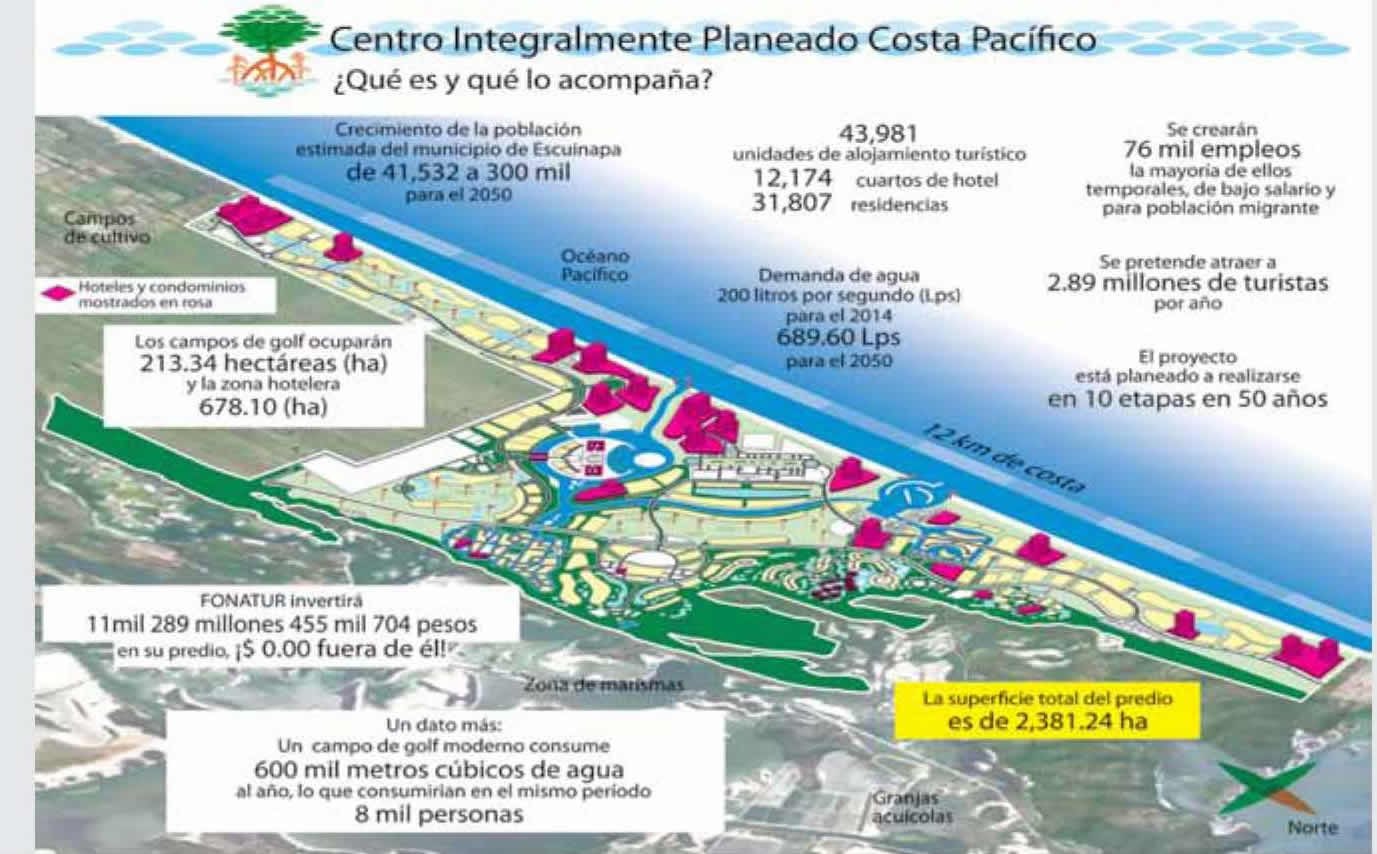
Focused on minimizing the negative impacts of the project, during July and September 2010,.the campaign's team of collaborators lead four informational workshops for aquaculturalists, agriculturalists, service providers, and artisanal fishermen. The result was a list of conditions for the project. They then used the list to help prepare 165 documents, all properly signed and representing 5900 families from the area, that they delivered to Semarnat.
They also: trained spokespeople; held a press conference; gave six performances of the "teatro popular" piece "The Last of the Ceviche" to raise public

In order to assure that Fonatur would follow through with their promises, the NGOs kept up political and legal pressure when they began a phase of public monitoring of Fonatur’s follow through on their agreements.
In August of 2010, local ejido members caught Fonatur in apparent violation of the law as evidenced by their having
 Carlos Simental, of Redes, promotes unity within the various public sectors in the face of common problems. (Photo: Ernesto Bolado Martínez)
Carlos Simental, of Redes, promotes unity within the various public sectors in the face of common problems. (Photo: Ernesto Bolado Martínez)Representatives from Escuinapa's business sector announced that they were in favor of development and progress for their communities but not at any cost. The conditions that they demanded were:
An opinion paper on the Regional Tourism Plan for Rosarito-Teacapán was also prepared, with the support of the Centro Mexicano de Derecho Ambiental A.C., SuMar, Voces por la Naturaleza A.C., ProEsteros, A.C., Conselva, A.C, Grupo Ecológico Manglar A.C., Conservación y Rehabilitación de Fauna Silvestre y sus Hábitat A.C., Red Ecologista por el Desarrollo de Escuinapa, A.C. and Defensa Ambiental Noroeste A.C..
Meanwhile, Greenpeace Mexico said “enough is enough,” pointing out that the project “doesn’t meet the established requirements set by Semarnat because it doesn’t have an environmental impact study,” and they demanded that the work be halted until they have the proper authorization.
connected the Baluarte-Teacapán aquaduct to bring water to their site for the construction of the basic infrastructure, an action that Semarnat had prohibited in the environmental impact statement for that project.
Given that the inhabitants of Teacapán and the ejidos of Isla del Bosque, Cristo Rey and Palmito del Verde depend on that aquaduct and already have water supply problems, an urgent call was made to the media outlets to denounce the action.This news was met with astonishment given that the municipality of Escuinapa, with just 45,000 inhabitants, currently doesn’t have an adequate drainage system, lacks health centers and schools, has water and electricity shortages and the streets are in terrible condition.
One other fact caught the attention of the specialists: that the recommendations of the Geography Institute of the Autonomous University of Mexico (contracted by Fonatur), were completely ignored in regard to not opening access channels to build marinas. It was determined that this action would lead to salinization of the aquifer
provide luxury class facilities by violating the law,” pointed out Carlos Simental from Redes, A.C.. Days later, on August 12th, Semarnat held a public informational meeting at the specific request of Redes. in order that Fonatur give a public presentation about the Pacific Coast CIP project and listen to feedback from the community. However, the attendees, including local, national and international media were in for a surprise that day when Fonatur presented their Pacific Coast CIP master plan that contained new information, differing from the original environmental impact statement that Semarnat used to to evaluate the project.
Consultants representing the Management, Policy and Environmental Planning agency (GPPA in Spanish) contracted by Fonatur announced that the project would generate 150,000 jobs (instead of the previous